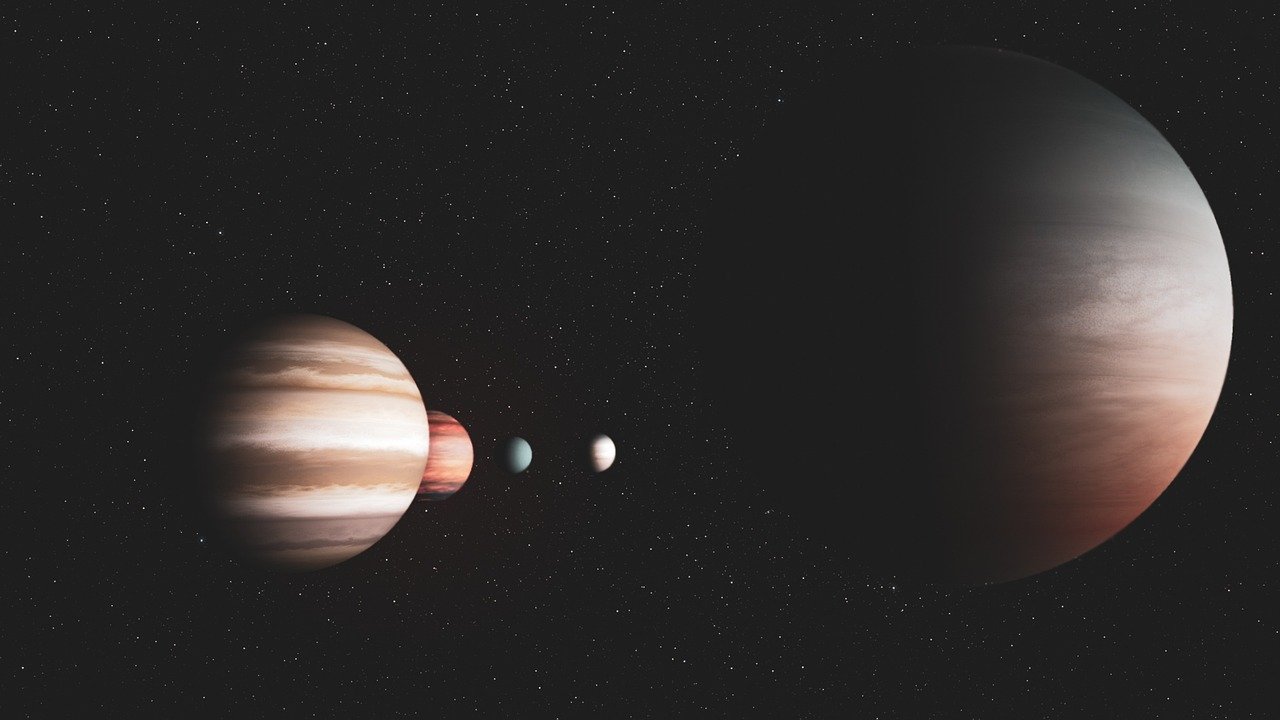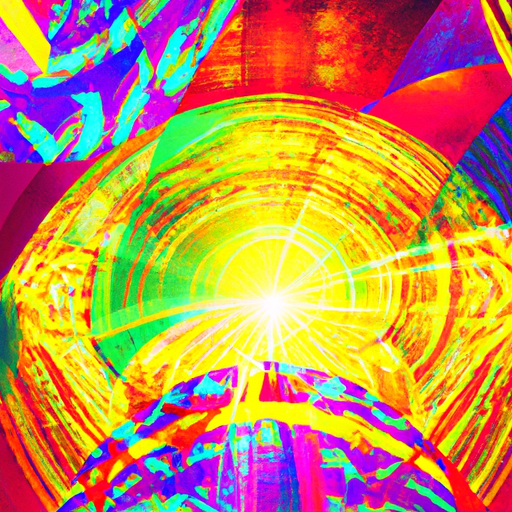Imagine a world where reality extends far beyond our own limitations, where multiple universes exist simultaneously, and where the concept of time and space becomes fluid. This captivating article explores the fascinating field of cosmology and its relationship with the mind-boggling theory of the multiverse. In this parallel universe, we will embark on a journey that challenges our understanding of existence, stretches the boundaries of human comprehension, and invites us to contemplate our place in the vast cosmic tapestry. Get ready to unlock the secrets of the universe and ponder the possibility of alternative realities.

The Multiverse Theory
Definition of the Multiverse Theory
The Multiverse Theory is a concept in cosmology that suggests the existence of multiple universes, or parallel realities, beyond our own observable universe. According to this theory, these parallel universes may have different physical laws, constants, and even dimensions, allowing for a wide range of possible realities to coexist.
Evidence Supporting the Multiverse Theory
While the Multiverse Theory is still highly speculative, there are several pieces of evidence that lend support to its possibility. One such piece of evidence comes from the observed fine-tuning of the fundamental constants of nature. The remarkable precision with which these constants are set suggests that they could have been fine-tuned by an external force, such as the existence of multiple universes.
Another line of evidence comes from the observation of anomalies in the cosmic microwave background radiation, which is the afterglow of the Big Bang. These anomalies, known as cosmic microwave background anomalies, could potentially be explained by the existence of other universes interacting with ours.
Furthermore, the theory of cosmic inflation, which proposes that the universe underwent a rapid expansion shortly after the Big Bang, provides a potential mechanism for the creation of multiple universes. According to this theory, the rapid expansion could have led to the formation of “bubble universes” that exist alongside our own.
Criticism of the Multiverse Theory
As with any scientific theory, the Multiverse Theory has faced its fair share of criticism. One major criticism revolves around the idea that the concept of multiple universes is untestable and therefore falls outside the realm of scientific inquiry. Critics argue that if the existence of parallel universes cannot be empirically tested or observed, it remains a purely speculative concept.
Additionally, there are concerns about the lack of a unified theory that can fully explain the existence of multiple universes. Many physicists believe that a complete understanding of the Multiverse Theory requires the development of a more comprehensive theory, such as a theory of quantum gravity, which is still a work in progress.
Despite these criticisms, the Multiverse Theory continues to captivate the imagination of scientists and laypeople alike, pushing the boundaries of our understanding of the cosmos.
Cosmology: Exploring the Universe
Understanding Cosmology
Cosmology is the branch of astrophysics that seeks to understand the origin, evolution, and structure of the universe as a whole. It encompasses the study of galaxies, stars, planets, and other cosmic phenomena, as well as the fundamental laws and principles that govern the universe.
By studying the cosmic microwave background radiation, the large-scale distribution of galaxies, and the behavior of cosmic structures, cosmologists are able to piece together a comprehensive picture of the universe and its history.
The Big Bang Theory
The Big Bang Theory is the prevailing scientific explanation for the origin of the universe. According to this theory, the universe began as a singularity, an infinitesimally small and dense point of matter and energy. Approximately 13.8 billion years ago, this singularity underwent a rapid expansion, giving rise to the universe as we know it today.
The evidence for the Big Bang Theory is robust and includes the observation of redshifted light from distant galaxies, the abundance of light elements such as hydrogen and helium, and the existence of cosmic microwave background radiation.
Expansion and Acceleration of the Universe
Observations of distant galaxies have revealed that the universe is not only expanding but also accelerating in its expansion. This phenomenon, known as cosmic acceleration, is believed to be driven by a mysterious form of energy called dark energy.
While the exact nature of dark energy remains unknown, its presence has significant implications for our understanding of the universe and its future. The accelerating expansion suggests that the universe may eventually transition into a state of cosmic emptiness, with all galaxies drifting apart and becoming unreachable.
Parallel Universes: What Are They?
Definition of Parallel Universes
Parallel universes, also known as alternate universes or parallel realities, refer to the concept of multiple universes existing simultaneously alongside our own. In these parallel universes, the physical laws, constants, and even the dimensions of reality may differ from what we experience in our universe.
The idea of parallel universes stems from various branches of physics, including quantum mechanics, string theory, and the Multiverse Theory. While the existence of parallel universes is still speculative, it represents a fascinating area of scientific exploration.
Types of Parallel Universes
There are several proposed types of parallel universes, each with its own characteristics and implications. One type is the “many-worlds interpretation” of quantum mechanics, which suggests that every possible outcome of a quantum event actually occurs in a separate universe.
Another type is the “bubble universes” hypothesized by the theory of cosmic inflation. In this scenario, universes like ours are thought to exist within their own bubble of spacetime, each with its own set of physical laws and conditions.
Additionally, certain theories propose the existence of parallel universes within higher-dimensional space, where universes may be stacked or embedded within one another.
Parallel Universes in Science Fiction
Parallel universes have long captured the imagination of science fiction authors and enthusiasts. These alternate realities serve as a narrative device, allowing for the exploration of different versions of characters, worlds, and events.
From the classic works of H.G. Wells to contemporary films like “The Matrix” and “Stranger Things,” science fiction often delves into the possibilities and consequences of parallel universes. While these depictions may stretch the bounds of scientific plausibility, they reflect humanity’s fascination with the unknown and the infinite possibilities of existence.
The Connection Between Cosmology and the Multiverse Theory
The Role of the Multiverse Theory in Cosmology
The Multiverse Theory plays a significant role in cosmology, as it offers a potential explanation for some of the perplexing questions and phenomena observed in the universe. By proposing the existence of multiple universes, the Multiverse Theory expands our understanding of the cosmos beyond what can be explained by our single universe.
How the Multiverse Theory Explains Cosmic Phenomena
The Multiverse Theory provides a framework for understanding various aspects of the universe that would otherwise be difficult to explain. For instance, the observed fine-tuning of the fundamental constants of nature can be attributed to the existence of multiple universes, each with its own set of constants.
Furthermore, the anomalies in the cosmic microwave background radiation, such as temperature fluctuations and non-uniformity, could potentially be explained by interactions between our universe and parallel universes.
Implications for the Origins of the Universe
The Multiverse Theory has profound implications for our understanding of the origins of the universe. If multiple universes exist, it suggests that our universe could have arisen from a larger, overarching system in which new universes are continuously being created.
By studying the nature of these possible parent universes and the mechanisms through which they give rise to new universes, cosmologists hope to gain insights into the fundamental question of why our universe exists and how it came to be.

Scientific Experiments and Observations
Multiverse Hypotheses and Predictions
Although direct observation of parallel universes remains elusive, scientists have proposed various hypotheses and predictions based on the Multiverse Theory. These hypotheses often rely on theoretical frameworks such as quantum mechanics and string theory to explore the implications of multiple universes.
For example, some hypotheses suggest that the existence of parallel universes could leave imprints or “fingerprints” on the cosmic microwave background radiation, providing indirect evidence for their existence.
Observable Consequences of the Multiverse Theory
While the Multiverse Theory itself is currently untestable, it has led to predictions of observable consequences that could potentially provide evidence for parallel universes. These predictions include the possible detection of anomalies in the cosmic microwave background radiation, the presence of gravitational wave signatures from interactions between universes, and the identification of patterns or correlations in the large-scale structure of the universe.
Experiments and Observations Seeking Evidence
Scientists have been conducting experiments and observations to search for evidence supporting the existence of parallel universes. For example, the European Space Agency’s Planck satellite has been studying the cosmic microwave background radiation in unprecedented detail, aiming to detect any anomalous patterns that could hint at interactions with other universes.
In addition, ongoing experiments at particle accelerators and observatories around the world are probing the fundamental laws of nature, hoping to uncover clues that might support or refute the Multiverse Theory.
Controversies and Debates
Criticism of the Multiverse Theory
The Multiverse Theory has faced criticism from various quarters within the scientific community. One common criticism is that the concept of parallel universes falls outside the realm of empirical science, as it is currently untestable and lacks direct observational evidence.
Additionally, some argue that the Multiverse Theory runs afoul of Occam’s razor, a principle that favors simpler explanations over complex ones. Critics suggest that postulating the existence of an infinite number of parallel universes may be unnecessarily complicated, especially without concrete evidence.
The Philosophical Debate: Are Parallel Universes Testable?
The question of whether parallel universes are testable has sparked a philosophical debate among scientists. While some argue that indirect evidence and theoretical models provide sufficient grounds for scientific investigation, others contend that the lack of direct empirical evidence undermines the scientific validity of the Multiverse Theory.
This debate highlights the tension between scientific rigor and the speculative nature of certain theoretical frameworks, demonstrating the ongoing struggle to reconcile the boundaries of empirical science.
The Multiverse Theory and Occam’s Razor
Occam’s razor, a principle attributed to the medieval philosopher William of Ockham, states that the simplest explanation that accounts for all the observed facts is often the most likely to be true. Critics argue that the Multiverse Theory violates Occam’s razor by introducing an excessive number of additional entities, i.e., multiple universes, without strong empirical support.
However, proponents of the Multiverse Theory counter that Occam’s razor should not be applied too rigidly when dealing with complex systems like the universe. They argue that the theory provides a coherent framework that explains otherwise puzzling phenomena and justifies the inclusion of multiple universes.

The Search for Empirical Evidence
Cosmic Microwave Background Radiation and the Multiverse Theory
The cosmic microwave background radiation, which is the afterglow of the Big Bang, has been a crucial piece of evidence in supporting the Multiverse Theory. Scientists have analyzed the patterns and temperature fluctuations in these radiation patterns, searching for anomalies that could be indicative of interactions between parallel universes.
By carefully scrutinizing these radiation patterns and comparing them with various theoretical models, researchers hope to uncover hints of parallel universes and gain a deeper understanding of the processes that shaped the early universe.
Exploring Cosmic Inflation
Cosmic inflation, a period of rapid expansion that occurred shortly after the Big Bang, is closely tied to the Multiverse Theory. By studying the predictions of different inflationary models, scientists are able to make inferences about the nature of parallel universes and their potential signatures in the observable universe.
Observations of the large-scale structure of the cosmos, such as the distribution of galaxies and the behavior of gravitational waves, offer valuable insights into the processes that unfolded during the inflationary epoch and the existence of other universes.
Detection of Gravitational Waves
The detection of gravitational waves, ripples in the fabric of spacetime caused by cataclysmic cosmic events, has revolutionized our understanding of the universe. These waves provide an avenue for probing the nature of the early universe and potentially uncovering evidence in support of the Multiverse Theory.
By characterizing the properties and origins of gravitational waves, scientists hope to shed light on the dynamics of parallel universes and their interactions with our own.
Implications of Living in a Parallel Universe
What Would It Mean to Live in a Parallel Universe?
Living in a parallel universe would entail a reality that may be drastically different from what we experience in our own universe. The physical laws, constants, and even the dimensions of a parallel universe could be vastly dissimilar, leading to unique and potentially alien environments.
For example, a parallel universe may exhibit different laws of physics, allowing for the existence of exotic phenomena like time travel, faster-than-light travel, or entirely unknown forms of matter and energy.
Alterations to the Laws of Physics
One of the most intriguing aspects of parallel universes is the potential for different laws of physics to govern reality. In a parallel universe, familiar principles and constants may have different values or completely new laws may emerge.
These alterations could have profound consequences for the way matter and energy behave, leading to exotic phenomena that would appear unimaginable in our universe.
Potential for Interactions between Universes
The Multiverse Theory posits that parallel universes may exist alongside our own, raising the question of whether interactions between universes are possible. While the nature of these interactions remains speculative, some theories propose that gravitational forces or other fundamental interactions could allow for occasional exchanges of energy or matter.
If such interactions were possible, they could have significant implications for our understanding of the cosmos and the potential interconnectedness of parallel realities.

Future Research and the Multiverse Hypothesis
Advancements in Technology and Observational Techniques
Advancements in technology and observational techniques hold the promise of providing more insights into the Multiverse Theory. By developing increasingly sophisticated telescopes, particle accelerators, and data analysis methods, scientists can explore the implications of the theory and test its predictions.
Future missions, such as the James Webb Space Telescope, will allow for even more precise measurements of the cosmic microwave background radiation, potentially shedding light on any signatures of parallel universes.
Quantum Mechanics and Parallel Universes
Quantum mechanics, a fundamental theory that describes the behavior of matter and energy at the smallest scales, is intimately connected with the concept of parallel universes. By furthering our understanding of quantum mechanics, researchers hope to gain new insights into the nature of parallel universes and the mechanisms that give rise to them.
Quantum experiments that involve superposition and entanglement present opportunities for testing theories related to parallel universes and exploring the boundary between the quantum realm and our observable universe.
Collaborative Efforts in Cosmology and Physics
The study of the Multiverse Theory requires collaboration among researchers from various disciplines, including cosmology, particle physics, and theoretical physics. By fostering interdisciplinary collaborations, scientists can combine their expertise and insights to deepen our understanding of the Multiverse Theory and its ramifications.
International collaborations, such as those involving large-scale experiments and data analysis, are crucial for pushing the boundaries of knowledge and driving progress in the field of cosmology. By pooling resources and expertise, scientists can tackle the challenges posed by the Multiverse Theory and pave the way for exciting discoveries in the future.
Conclusion
The Multiverse Theory represents a bold and captivating concept in cosmology, proposing the existence of multiple universes beyond our own. While still highly speculative, this theory has garnered attention and interest due to its potential to explain observed phenomena and answer fundamental questions about the universe.
Supported by evidence such as the fine-tuning of the fundamental constants, cosmic microwave background anomalies, and the theory of cosmic inflation, the Multiverse Theory opens up new avenues for scientific exploration.
However, the idea of parallel universes also faces criticism and controversies, with some arguing that it falls outside the boundaries of empirical science or violates Occam’s razor. Nonetheless, ongoing scientific experiments, observations, and theoretical advancements continue to push the limits of our understanding and explore the Multiverse Theory.
With advancements in technology, observations of cosmic phenomena, and collaborative efforts in cosmology and physics, the future of studying parallel universes promises exciting discoveries and a deeper comprehension of the nature of our own universe and its potential place within a multiverse.
